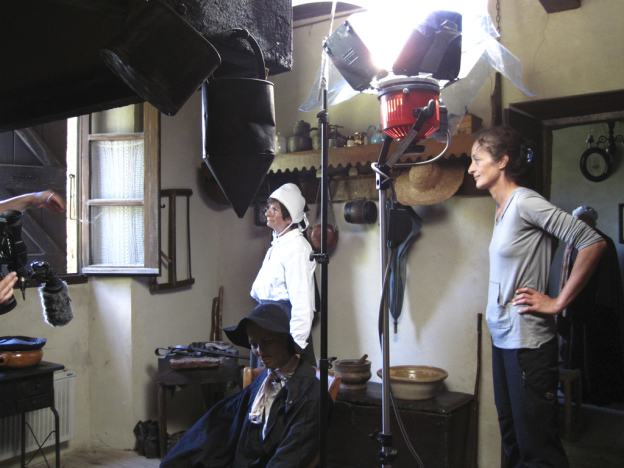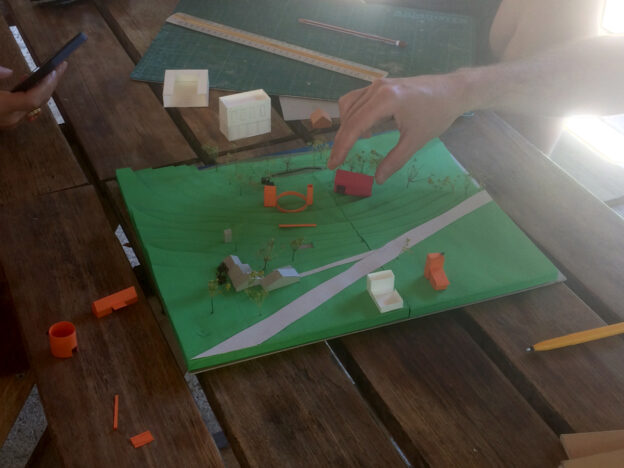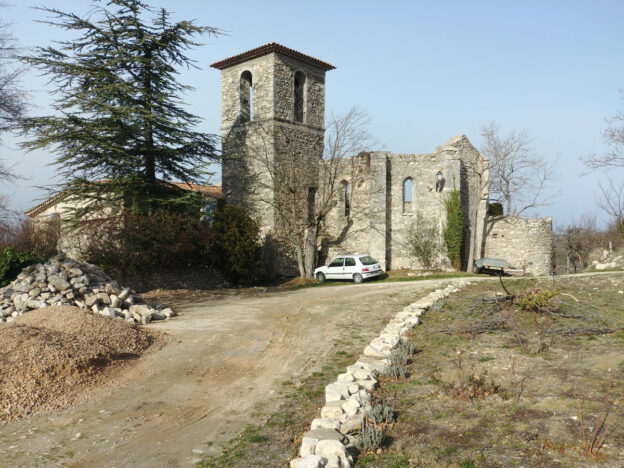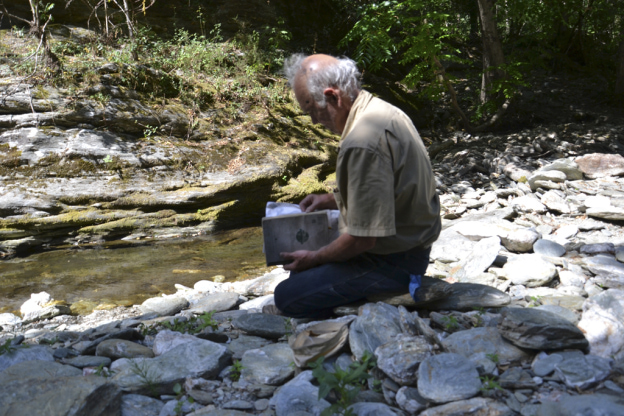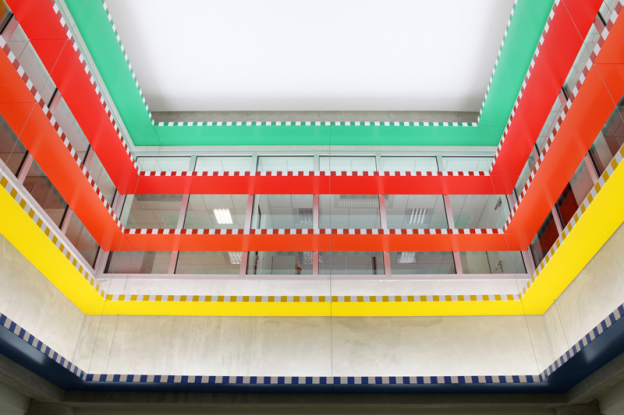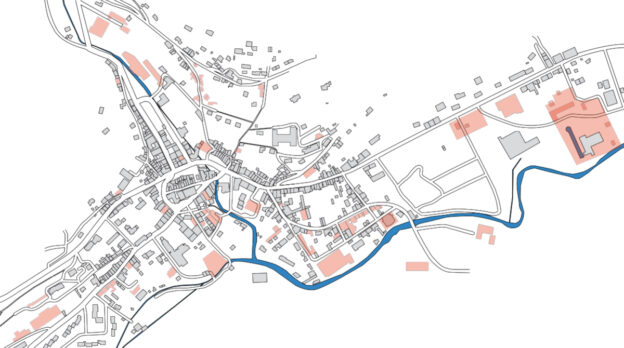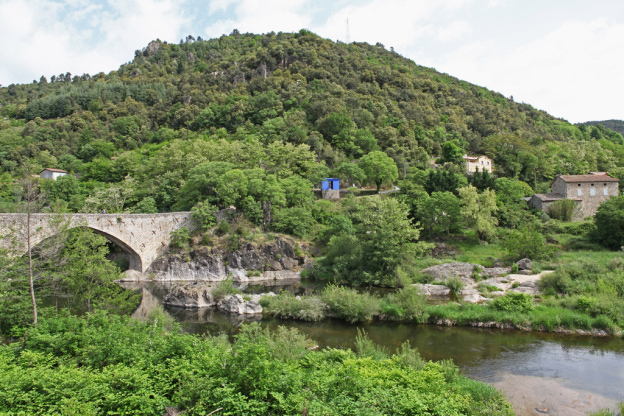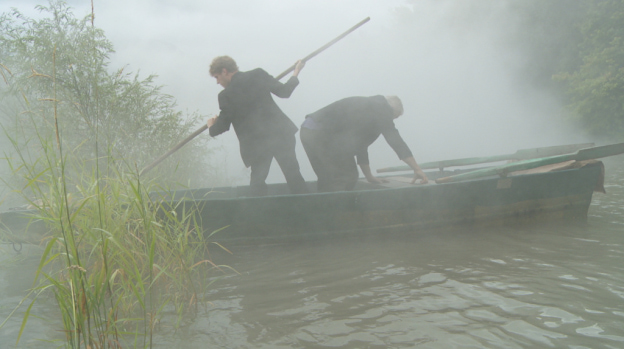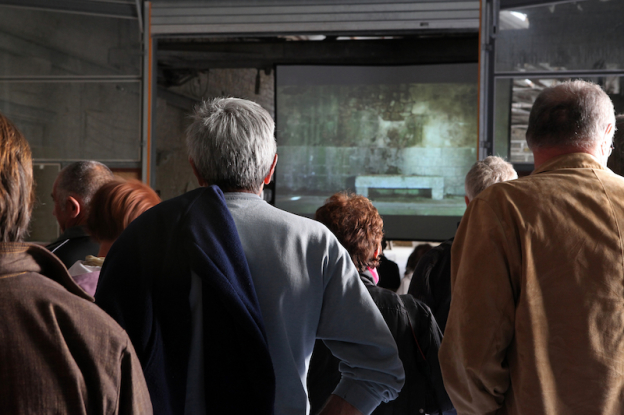From 1972 to 1991, the whole village of Rochechinard performed a light show at the foot of its castle. This is the context in which the Rochechinard museum was created – a tangible testimony to the attachment of a population to its history. Named the Royans Memory Museum, its collection is made up of what the locals have given or loaned to it for 40 years. However, the Rochechinard museum is going through a difficult period like most ecomuseums. Its museology could appear outdated and the team has noted a drop in attendance. The association Les amis de la maison de la Mémoire (Friends of the Memory House) approached artist Eulàlia Valldosera to address the issue of transmission – with, in time, the loss of orality that was at the heart of the initial project ¬– establish a double relation, spatial – circulation in the museum, link to the site – and temporal, objects from the past to those of today.
The initial proposition was based on two elements: an author’s film to be projected continuously in the so-called “well” room and the transformation of the museum into a centre for the creation and production of memory. This second step was suspended for political reasons.
The film not only claims to document a project by a group of local people wishing to preserve their local heritage, but also aims to highlight a film object, a current event that reanimates our past, a way to reactivate the potential hidden under layers of forgetfulness and prejudice.
Before the Light articulates different types of registers, ranging from documentary to fiction, and shows the mechanisms the artist used to get there. That is to say, the film crew, their intrusion in the house, the actors’ preparation and their improvised encounters with objects that would be used as props. This film looks at the present at the same time as it recreates the past from stories that members of L’Association créatrice de la maison de la Mémoire (Memory House Creative Association), its guards and interpreters, tell the camera: The anecdotes that they recount during guided tours when the camera is in the audience. This film proposes the medium of film as a form of archive.
The book, Rochechinard, Memory of a House-Museum, published at the end of 2019, is presented as an extension of the commission, an artist’s vision of the transformation of the museum and the state of researchers’ questioning, professionals on the future of these places.
Patrons: Members of the board of directors of Amis de la Maison de la mémoire de Royans association, Alain Derbier, founder of the Rochechinard museum, Mireille Gepponi, Catherine Flament, Jeanne Charve, Josette Derbier, Roland Meunier
Funding: Fondation de France/ New Patrons Programme, former Pays du Royans Community of Communes
Avant la lumière
commanditaires : les membres du conseil d’administration de l’association des Amis de la Maison de la mémoire de Royans, Alain Derbier, fondateur du musée de Rochechinard, Mireille Gepponi, Catherine Flament, Jeanne Charve, Josette Derbier, Roland Meunier
soutien : Fondation de France / action Nouveaux commanditaires, ancienne Communauté de communes du Pays du Royans
2015
crédits : Eulàlia Valldosera
